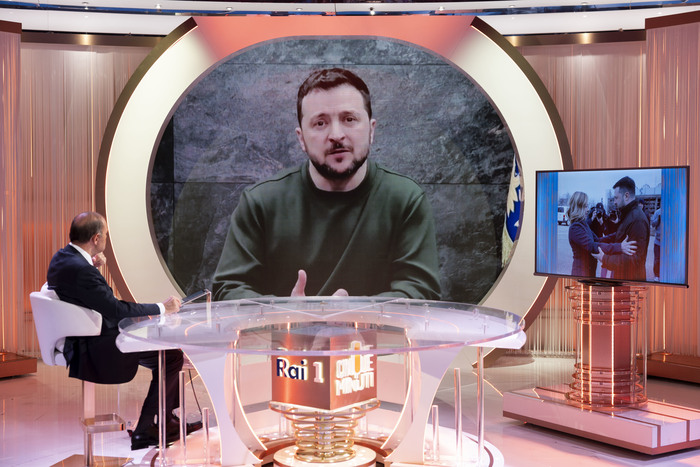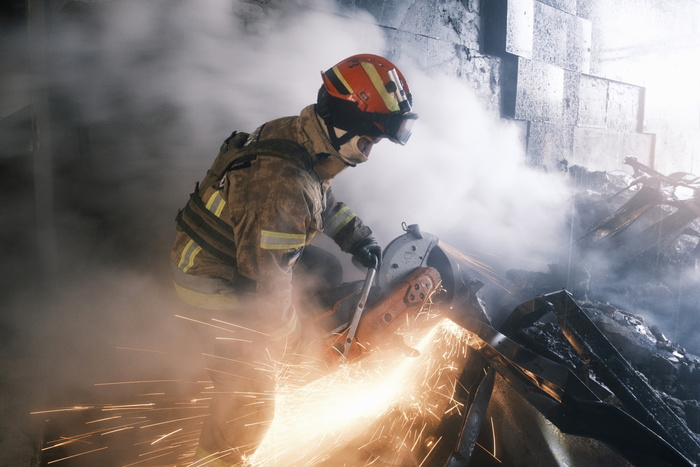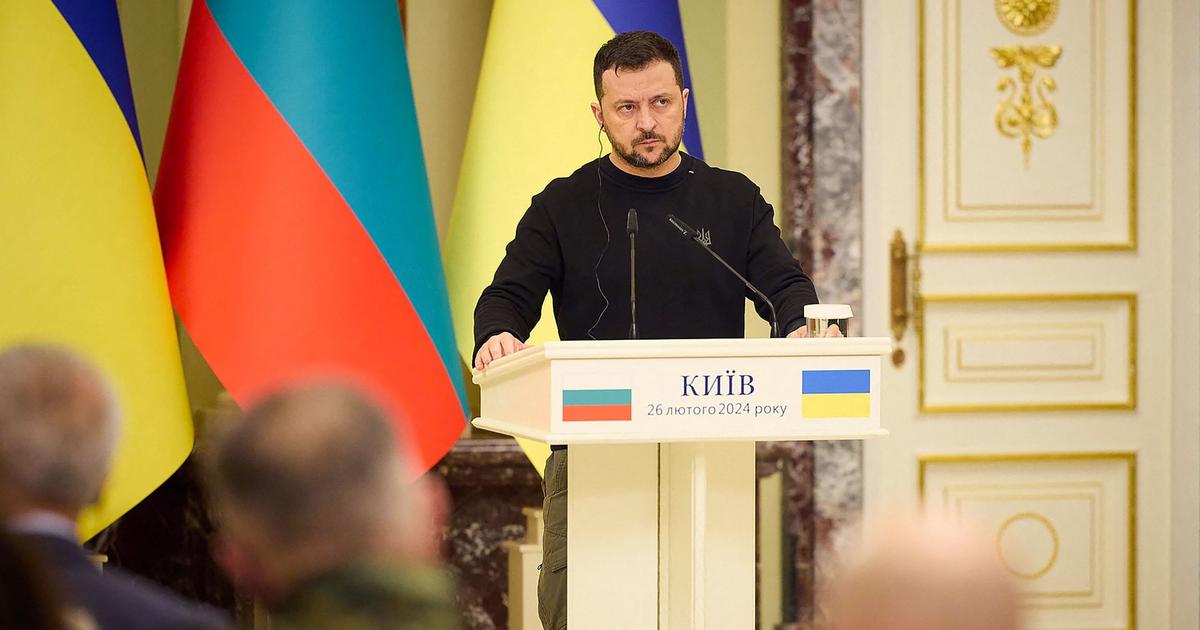Biden announces that the US will send 31 Abrams tanks to Ukraine 2:20
(CNN) --
The more Russian President Vladimir Putin tries to break up NATO, the stronger he gets.
Not for the first time in the Ukraine war, President Joe Biden took decisive action that closed cracks in the alliance.
He announced on Wednesday that he would send 31 advanced US tanks to the Kyiv army, in a move that prompted a reluctant Germany to drop its resistance to sending its own tanks and could unlock similar moves across Europe.
This represents an important symbolic, political and military victory for Ukraine.
He hopes what he calls his new "iron fist" will break through entrenched Russian lines in the east, push an advance over the Russian land bridge into annexed Crimea in the south and prevent a feared Russian spring offensive.
It took Biden's political savvy to end the most public and damaging Western rift of the war yet.
The United States had previously said that its Abrams tanks were too complex and maintenance-intensive for the Ukraine war and unsuited to the terrain.
But Biden's turnaround, which gives cover to Germany, underscores Washington's view that Western unity against Putin is critical to saving Ukraine.
Latest-minute and live news from Russia's war in Ukraine
In fact, Putin's main goal off the battlefield is to drive divisions among the Western allies and disrupt or end the flow of arms on which Ukraine's survival as an independent nation depends.
Its failure, despite fierce Russian public threats aimed at intimidating European nations into reticence about tank transfers, also comes after a mild winter robbed Russia of another aspect of its strategy: depriving Europeans imported gas during the frosts in the hope that they would put pressure on their own leaders to stop supporting Ukraine.
advertising
"Putin expected Europe and the United States to weaken our resolve," Biden said at the White House on Wednesday.
"He expected our support for Ukraine to crumble over time. He was wrong ... and he was wrong from the start and he continues to be wrong. We are united."
NATO's message after the announcement of the shipment of tanks to Ukraine 1:31
An extraordinary strategic change
As the first anniversary of the unprovoked Russian invasion approaches, Biden and the West find themselves in an extraordinary position that few strategists would have thought possible a year ago.
—NATO is stronger and more united than it has been in years.
And that is a strategic disaster for Russia.
The alliance's sense of drift at the turn of the 21st century has faded as a reminder of the bloc's founding purpose: a common defense against Moscow's aggression.
Putin's behavior will ensure that lesson about the alliance lives on for decades.
—Biden has pinned his legacy on a major ground war in Europe, in which the United States has engaged in an effective proxy battle with its nuclear rival Russia.
This fight—which is, in a way, the last battle of the Cold War—is a test of will between an American president and a Kremlin strongman deeply influenced by the US-Soviet confrontation.
Biden has led the most important foreign policy enterprise since at least the 2003 invasion of Iraq. His success is crucial to America's credibility and his own.
The magnitude of the mission is likely to dwarf much of the rest of his presidency — including the current investigation into the loss of classified documents — in world history.
—Biden has reestablished the United States as a strong world leader, reigniting his critical transatlantic alliance and leading the allies behind the effort with successful and intense diplomacy.
And so far, the president's balance — between funneling increasingly powerful weapons into Ukraine and avoiding an escalation with Putin that could lead to a showdown with the West or even Moscow's use of a smaller-scale tactical nuclear weapon — has been maintains.
The start of the second year of the war in Ukraine and the growing involvement of NATO will test this equation like never before.
Germany and the United States will send tanks to Ukraine: when could they arrive and how many would be sent
—The most notable aspect of the evolution of the relationship between the West and Ukraine is that one of Putin's supposed motivations for the war was to anticipate the possibility that the former Soviet state could enter NATO, which would be an even humiliation. greater for Moscow than the accession of nations that were once part of the territory of the Warsaw Pact, such as Poland, Romania and Slovakia.
But now, Ukraine's war effort is being armed and financed by the West, almost as if it were a de facto NATO state with access to some of the alliance's most sophisticated weapons systems.
The Western justification for that support is also evolving.
Before, the main objective was to allow a defenseless nation to repel an unprovoked invasion so that its people would be free to choose their political system and their sovereignty.
Now the alliance leaders appear to see Ukraine as a vital strategic stronghold.
"If President Putin wins, it's a tragedy for Ukrainians, it's dangerous for us too," NATO Secretary General Jens Stoltenberg told CNN's Kate Bolduan on Wednesday, arguing that a nation cannot be allowed to authoritarian exercise their will and take advantage of threats.
"It is in our security interest to support the Ukrainians," she said.
And now that?
Even if he continues to fail, Putin is unlikely to stop trying to splinter the Western alliance.
Hostility towards the United States and its allies and the search for revenge have been the basis of his more than two decades in power.
And strangling the arms supply to Ukraine and stoking Western war-weariness remain crucial to their hopes of achieving victory or avoiding decisive defeat.
Moscow reacted furiously to the tank decision, calling it extremely dangerous and adding that it took an already bloody conflict to a new level.
Still trying to avoid any escalation that could lead to a direct confrontation between NATO and Russian forces, Biden stressed that the new tanks posed no offensive threat to Russia if Putin withdrew his troops from Ukraine.
Critics of the war and the massive flow of Western weapons are increasingly concerned that the West will end up simply fueling a bloody stalemate that will result in the senseless killing of thousands of Ukrainian and Russian soldiers and Ukrainian civilians.
Since both Moscow and Kyiv seem to believe they can still win the war, there is little room for a diplomatic push for a ceasefire or peace.
Will tanks sent to Ukraine make a difference in the war?
3:09
However, Western military strategists warn that Moscow, after an already bloody onslaught, is preparing a new offensive for the spring.
"It is dangerous to underestimate Russia," Stoltenberg said in a speech in Oslo on Wednesday, noting that Moscow had mobilized 200,000 more troops and was willing to take great risks and endure staggering losses.
Ukraine, as always, will ask for more
Ukraine will now be under pressure to show that it can use these new main battle tanks in properly planned combined military operations that maximize their advantages but minimize their weaknesses to achieve significant battlefield gains.
While the German tanks, known as Leopard 2s, could arrive in a matter of weeks, John Kirby, the National Security Council's strategic communications coordinator, told CNN it would be "many months" before the Abrams arrived, and they have yet to be purchased from US manufacturers.
Still, the chain of diplomatic and military fallout that was unleashed by Biden's willingness to send the tanks sent an important message to Moscow.
"They are more important as a symbol of American and European commitment," retired General Wesley Clark, a former NATO Supreme Allied Commander in Europe, told CNN's Wolf Blitzer.
Ukraine had requested at least 300 main battle tanks.
Although it remains unclear how many he will receive in new Allied shipments, the total could be as high as 100.
He no doubt hopes that, once turned on, the new weaponry spigot will continue to flow.
That is what has systematically happened in the war.
At the time of the invasion last February, the United States and its allies were wary of even supplying basic weapons.
But as the brutal war unfolded, and Ukraine inspired the world with its resistance, the barriers to more kinetic aid began to disappear.
Kyiv is now receiving weapons, ammunition, drones, Javelin anti-tank missiles, armored vehicles, Patriot anti-missile missiles and now some of the most sophisticated tanks in the US and allied armies.
In Washington just before Christmas, Ukraine's President Volodymyr Zelensky warned that his country's needs were so great that it would never stop calling for more weapons.
Until now, the supply of fighter jets—his administration's most cherished request—has been a red line that Biden has been unwilling to cross.
She is also one of the ones that previously caused divisions in the alliance.
But the pattern of this war is that what Ukraine asks for, in the end it gets, even if the scale of its requests for specific equipment is not always met.
War in Ukraine Joe Biden








